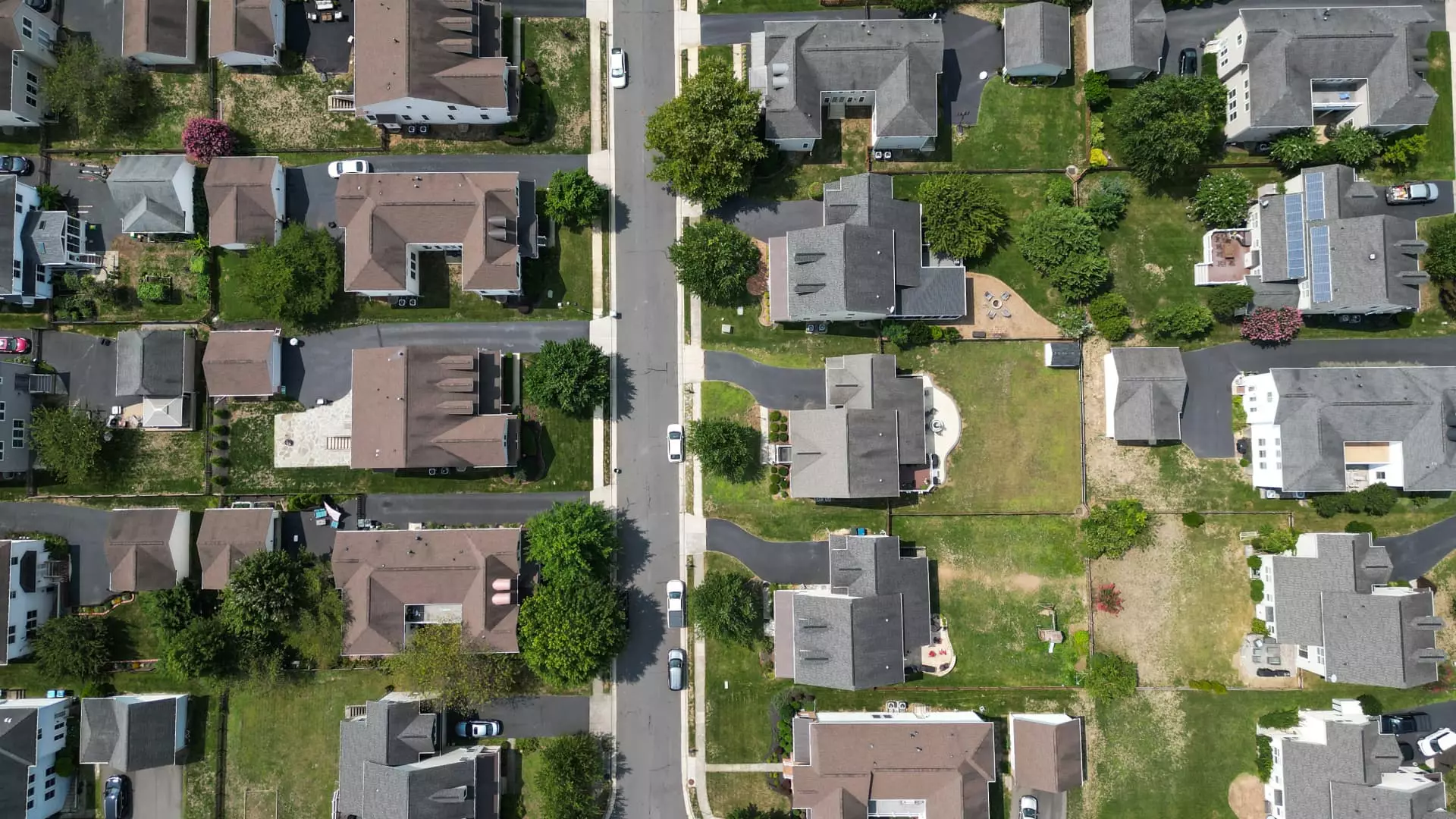Mortgage Rates Surge: The 5 Shocking Trends Ignoring the Market’s Discontent

In an unexpected twist that could leave homebuyers bewildered, mortgage rates have recently spiked to their highest levels in over a month. With a jarring jump of 22 basis points on Monday and a further 3 basis points on Tuesday, the average rate for a 30-year fixed mortgage now stands at a striking 6.85%. This alarming trend follows a fleeting moment of hope, as rates had dipped to their lowest level since last October just a week prior. The erratic swings of mortgage rates mirror broader trends in the stock and bond markets, exposing a deeper discontent among buyers navigating a turbulent economic landscape.
It is notable that the recent ascent in mortgage rates starkly counteracts the earlier fall, reflecting a significant recalibration of investor sentiment. This week’s developments are complex and layered, influenced by external factors like President Donald Trump’s tariffs, which sparked immediate reactions in the financial markets. Following his announcement, the stock market tumbled, prompting investors to retreat to safer ground—the bond market. As bond yields fell, one might have hoped for a sustained decrease in mortgage rates, only to witness their rapid resurgence.
The Market Reacts, but Homebuyers are Left Hanging
Experts, such as Matthew Graham of Mortgage News Daily, have emphasized how fleeting market reactions can create significant turmoil in the mortgage landscape. With the bond market’s oscillations reflective of rising economic anxieties, homebuyers are faced with an exacerbated challenge. The earlier drop in mortgage rates—described by Graham as a “knee-jerk reaction”—suggests a temporary psychological lift for the market rather than a stable, long-term improvement.
The implications for potential buyers are unsettling. High and continuously rising home prices combined with stagnant wage growth create an environment where buying a home feels increasingly out of reach for many. Even with a slight easing in the mortgage landscape, the combined pressures of economic insecurity and inflated properties make it difficult for homebuyers to feel optimistic. As Danielle Hale from Realtor.com points out, an influx of homes for sale doesn’t necessarily translate to a more competitive environment for buyers under current economic conditions.
The Unyielding Grip of Economic Concerns
A pressing factor in the mortgage market’s fortunes is the looming uncertainty surrounding broader economic health. While the spring housing season has seen an uptick in sellers, prospective buyers remain hesitant, tethered by the fear of high costs and decreasing job security. Lawrence Yun of the National Association of Realtors articulates this sentiment well, noting the disparity between home sales and historical averages. The fact is, even with a slight uptick in signs of life within the real estate market, the actual activity remains alarmingly low.
The dual challenges of high mortgage rates and high home prices have created a severe barrier to entry for many prospective buyers, allowing the so-called “mortgage rate lock-in effect” to further stifle the market. With a tangible disingenuousness in the current climate, engaging with the market feels less like a strategic maneuver and more like stepping into a minefield devoid of any clear path to success.
The Weight of Upcoming Economic Indicators
The current fluctuations in mortgage rates have left the market at a crossroads, particularly as it anticipates two key economic indicators: the consumer price index (CPI) and the producer price index (PPI) reports. Historically, these indicators have a major influence on mortgage rates, often acting as barometers for future adaptability within the housing market. The speculation surrounding these reports adds another layer of anxiety for homebuyers, who are left waiting with bated breath for any sign that might influence their purchasing decisions.
As we delve deeper into the complexities shaping today’s market, one must question whether current rates genuinely reflect the underlying economic conditions or merely the fever dreams of a market grappling with its path forward. While the psychological impact of dropping rates may have offered a temporary reprieve, the harsh reality of rising rates, economic uncertainty, and housing affordability continues to loom large over potential buyers. Similar to the shifting tides of the bond market, only time will tell where the housing industry will land, and it’s hard not to feel a sense of trepidation for those who aspire to succeed in this unfriendly market.





